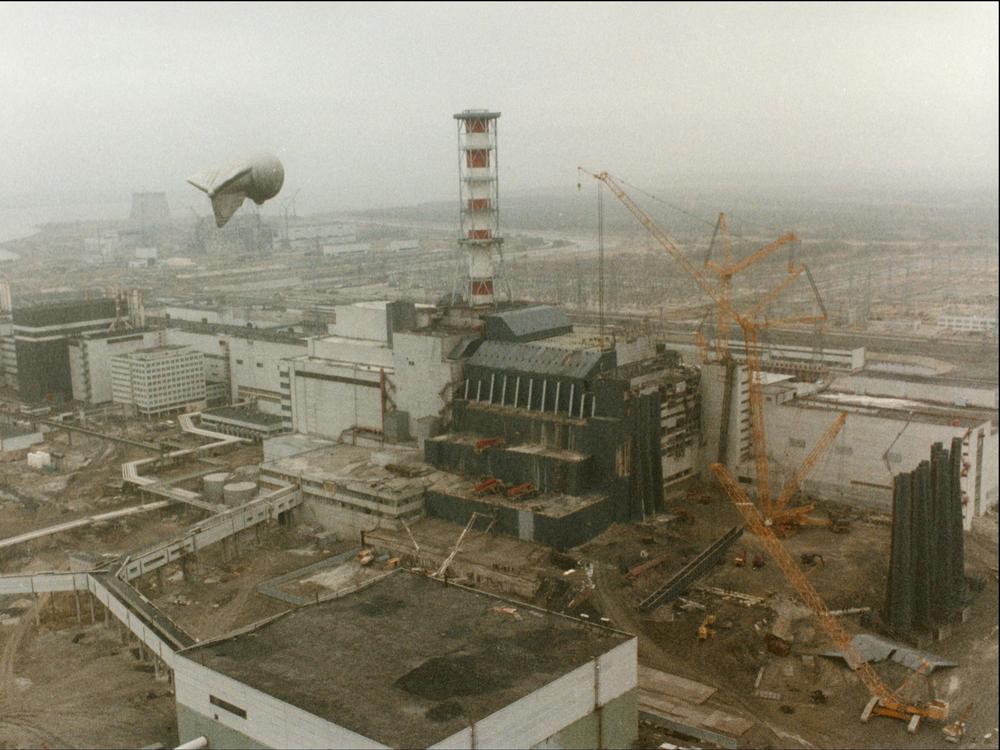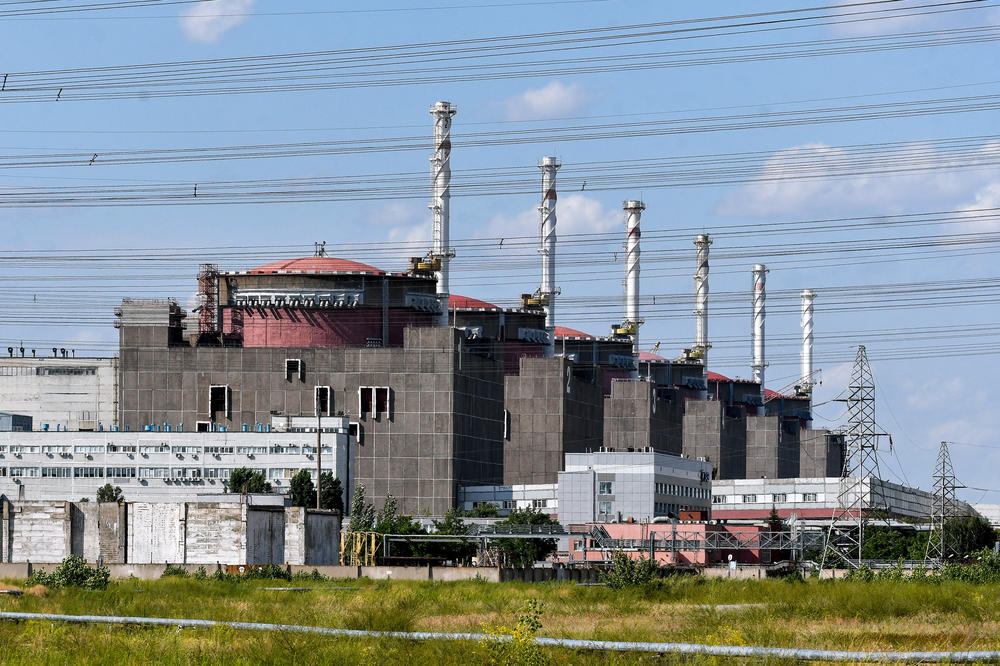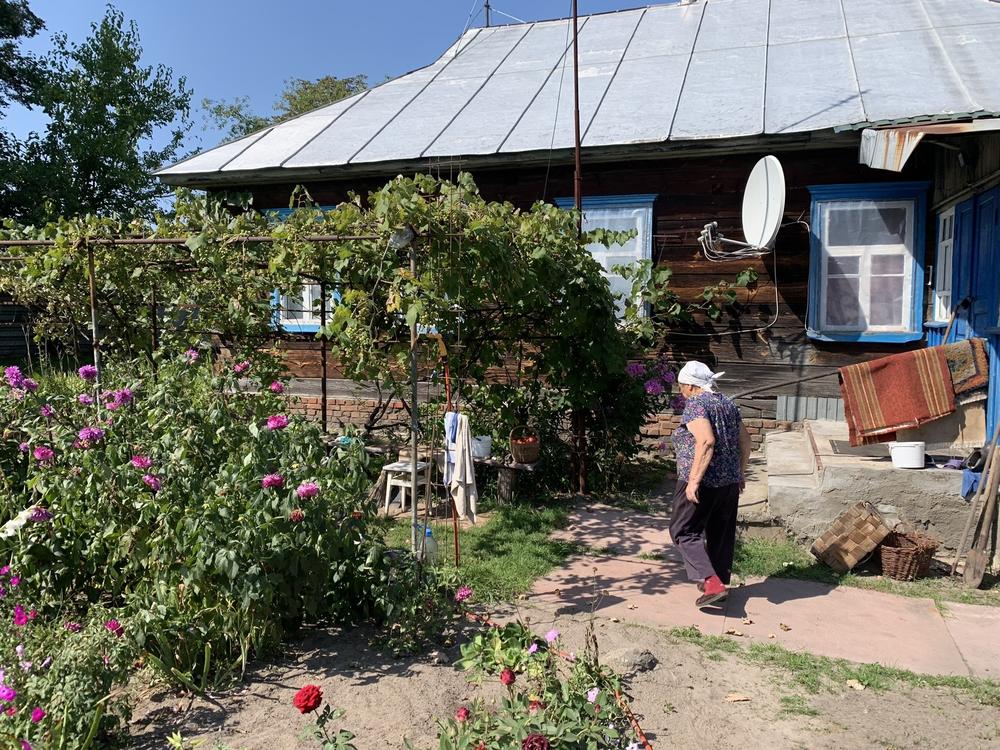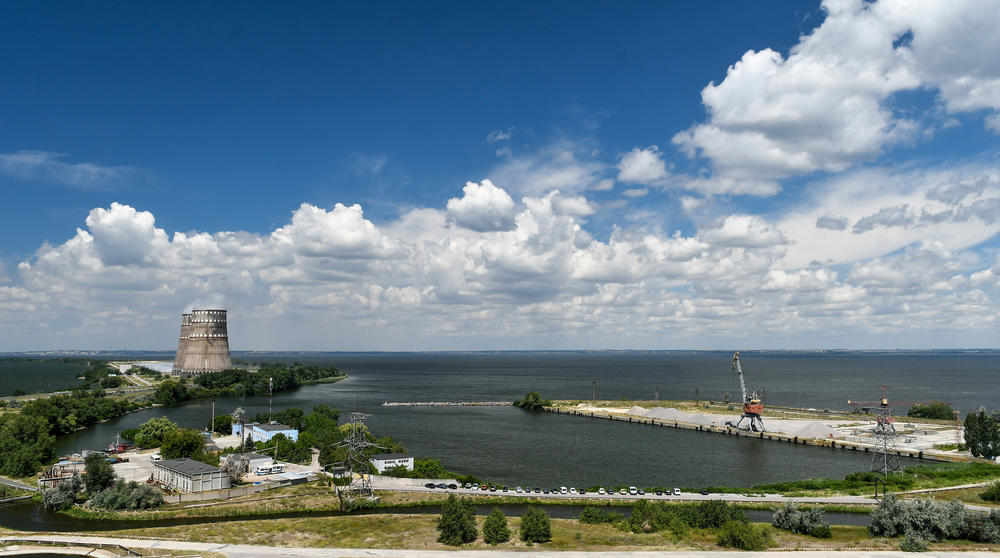Section Branding
Header Content
Ukraine still fears another Chernobyl-size disaster at Europe's largest nuclear plant
Primary Content
CHERNOBYL, Ukraine — Sophia Arkadiyivna remembers when the Soviet Union built the Chernobyl Nuclear Power Plant in 1977, just 20 miles from the village where she served as mayor.
After years of atomic energy powering big Russian cities like Moscow, Leningrad and Voronezh, the USSR was finally ready to expand the technology to other Soviet republics like Ukraine. Soviet propaganda promised easier jobs and cleaner air.
"We didn't have a reason to distrust the government. They showed us how good things could be," she says.
Or so she thought at the time. It didn't take long for Arkadiyivna to turn skeptical.
She heard from friends and relatives who worked at the Chernobyl plant that authorities would cut corners and pump up power production for the USSR to export to other Eastern bloc countries.
"The Russians always wanted more — faster, more!" she recalls. "It was greed."
On April 26, 1986, Arkadiyivna's worst fears about the reactor's safety came to fruition. One of the reactors blew up, releasing a cloud of radiation over Ukraine and across Europe.
The Chernobyl disaster remains the worst civilian nuclear incident in history.
For months, the International Atomic Energy Agency has warned of another potential nuclear disaster brewing in southern Ukraine, at the Zaporizhzhia Nuclear Power Plant, which Russia has occupied since March. Russia and Ukraine have traded blame for shelling that has repeatedly hit structures around the site, even as IAEA personnel are stationed there.
"I never thought I would see another nuclear disaster [in Ukraine] in my lifetime," said Arkadiyivna, "not even during Armageddon."
How Russia's nuclear energy helped lead to an independent Ukraine
The Soviet Union put nuclear science at the center of its Cold War strategy — both economic and military.
"Moscow developed nuclear energy above all to control everything — to keep it close and protected from possible conflict," says Oleksandr Sukhodolia, a Ukrainian energy policy expert.
Like many aspects of Soviet life, the nuclear industry was defined by ethnic segregation.
"Ukraine was looked at like a kind of outback. ... As far as nuclear power was concerned, Ukrainians were not trusted to run it themselves," says David Marples, a historian at Canada's University of Alberta and author of multiple books about the Chernobyl disaster.
After the disaster, Soviet Ukrainian bureaucrats raised difficult questions about why they weren't involved in oversight.
Yuriy Samoilenko was the chief environmental inspector at Kyiv's city hall at the time of the Chernobyl meltdown. He says he knew there were some risks associated with nuclear energy, but felt misled by the government in Moscow about the scope of the blasts. After all, the power plant is just 60 miles north of Ukraine's biggest population center.
"Why did they say it was safe to go outdoors? Why did they build it so close to Kyiv?" Samoilenko says. "Why was it all such a secret?"
He linked up with Ukraine's nascent independence movement to find some answers.
"Before Chernobyl, I didn't understand why we needed to be independent. But I did understand that we're no less deserving of dignity than Russians," Samoilenko says.
Soon other environmental scientists joined with the dissidents, and established an organization called Green World. The Soviet government tolerated youth environmental movements, but behind closed doors, the group pushed for Ukrainian independence.
"The only way to protect the environment is through democratic action — because everybody has to be involved in protecting the things that affect everybody," says Samoilenko.
By 1991, they had their wish. Ukraine declared independence and the Soviet Union fell apart.
"All anybody needed to do to vote for independence was say one word: 'Chernobyl,'" Samoilenko says.
Ukrainians were finally in charge of their own nuclear industry, responsible for 12 large nuclear reactors, with several more planned.
The Chernobyl cleanup took a substantial chunk of newly independent Ukraine's national budget. Meanwhile, dependence on nuclear energy crept up to 55% of the country's production, according to the IAEA. That rate of production is second only to France.
"Nuclear power has never really gone away, it's even gone up despite Chernobyl," says Marples, the historian in Alberta.
Nuclear fears and the Russian invasion
Sophia Arkadiyivna is now retired as mayor of her hometown of Kupovate. Ukraine's government erased the village from the map in 1999. That's because it's in the 60-mile-wide "exclusion zone," which was deemed too dangerous for the public after the Chernobyl disaster.
But after she retired from her other job as a school teacher, she returned, despite the environmental risks. The government turns a blind eye to pensioners like her who opted to return to their abandoned houses. She spends most days now alone, tending to her garden, her main source of sustenance.
"I'm just happy to be home. I'm happy with every flower, and every leaf, and every animal," she says.
She speaks Ukrainian, with a few Belarusian words peppered in. This village is closer to the border with Belarus — just 10 miles to the east — than to the former Chernobyl plant. She says she used to believe there wasn't much difference between Ukrainians, Belarusians and Russians.
"Us old folks raised our kids to believe in God: Don't steal, don't kill, don't bother anyone, live virtuously, have a soul, help people," she says while angrily chopping vegetables to pickle for the winter.
"But the Russians beat us, raped us. And today they don't want there to be a free Ukraine."
Hundreds of other retirees like her lived through the Russian occupation of the exclusion zone in March, as did thousands of Ukrainian officials and workers who continue to maintain the vital power infrastructure that passes through the zone.
Oleksandr Havrylenko, the safety chief in the exclusion zone, says the Russians stole radios, tires, batteries or alternators from his entire fleet of vehicles. Many had smashed windows or bullet holes in the doors.
"I give it a 50-50 chance they'll be back," Havrylenko says of the Russian forces.
Instead of working on necessary tasks around the zone, Havrylenko and his team are still cleaning up after the Russian occupation. Having survived the month-long occupation, though, they can hardly imagine the stress that people working at the Zaporizhzhia nuclear power plant are under.
"I'm very, very scared," says Serhiy Biruk, a top official with the Ukrainian agency that manages the exclusion zone. He's been involved in the Chernobyl cleanup for 37 years.
After Russia forcibly annexed the territory in September, Ukraine's power utility says occupation officials forced Ukrainian nuclear workers to sign new contracts acknowledging Russia's control over the power plant.
"I don't think the Russians know what the real danger is," Biruk says.
But a potential meltdown is only half the dilemma, according to Anna Ackermann, co-founder of a Ukrainian environmental group called Ecoaction.
"Ukraine's energy system was meant to function with Russia and Belarus," she says. While Ukraine did separate its grid from those countries after 2014, Anna Ackermann says that nuclear energy is centralized by its very nature.
With the Zaporizhzhia nuclear power plant now disconnected from the Ukrainian grid, Ukraine loses a substantial proportion of its power generation. That's been exacerbated by Russia's attacks on energy delivery infrastructure across the country over the past couple of months.
Ackermann says people want their energy production to be even more local. They're looking to the lifestyles of people like Arkadiyivna, relying on off-grid utilities like batteries and solar panels to survive.
"We're entering a new area where Ukrainians want autonomy," says Ackermann. Autonomy, like energy sources and homesteads they know how to sustain.
"It's a striking difference with nuclear power plants," Ackermann says.
Copyright 2022 NPR. To see more, visit https://www.npr.org.




